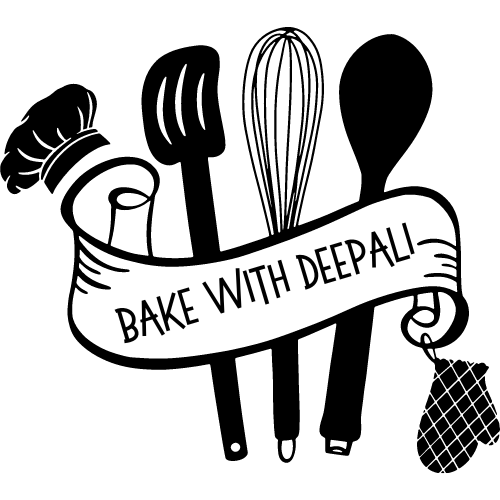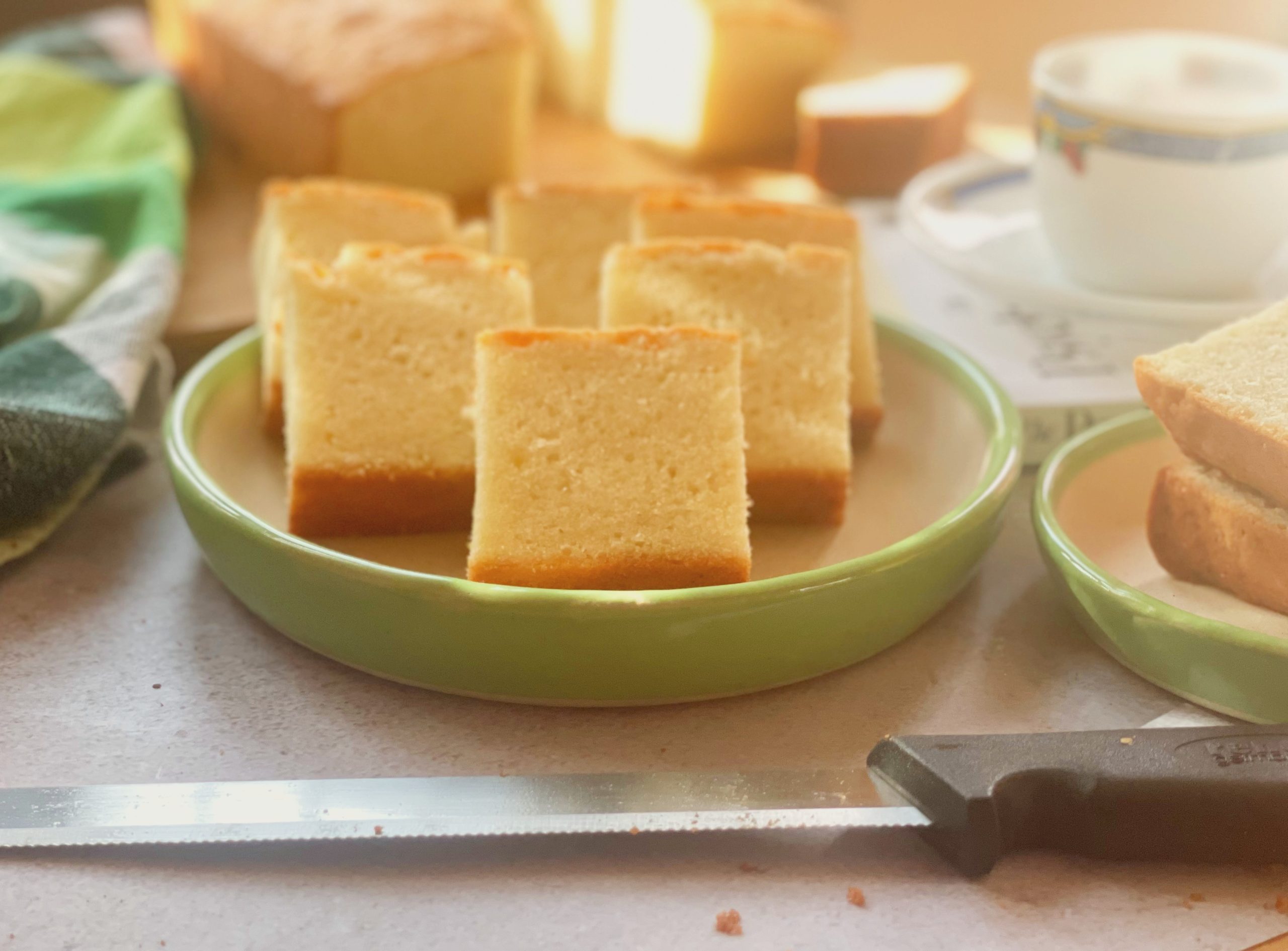Introducing the Soft & Moist Butter Cake – a timeless classic that’s been a staple in my baking journey since the beginning. While it may seem simple, creating the perfect butter cake requires patience, especially in the delicate process of mixing the batter. Unlike other cakes, such as moist chocolate or sponge cakes, where over-mixing is a big no-no, butter cake demands a thorough and precise mixing of butter and sugar to achieve that light, soft, and fluffy texture. It’s all about getting the butter and sugar to blend seamlessly, ensuring the cake rises beautifully without sinking. So, while it may take a bit longer than your average cake, trust me, the results are well worth the effort.
A Tale of Butter Cake’s Origin
Butter cake’s origins are a bit of a mystery, shrouded in whispers of family recipes and baker’s tales. Some claim it originated from a German-American baker in St. Louis during the 1930s, perhaps a happy accident involving a swapped ingredient. Others credit it to bakers experimenting with classic coffee cake recipes. Regardless of its exact birthplace, butter cake has become a beloved American baking staple. It’s simple yet rich flavor and ease of preparation have secured its place in kitchens and hearts across the country.
The earliest versions of butter cake were simple, made with basic ingredients like butter, sugar, eggs, and flour. Over time, as baking techniques evolved and ingredients became more accessible, variations of the butter cake emerged across different regions. In the United States, butter cake gained popularity during the 19th century, particularly in the Southern states, where butter was plentiful. It became a beloved dessert for its moist texture and buttery taste, often served on special occasions and family gatherings. Today, butter cake continues to be cherished worldwide, with countless recipes and adaptations showcasing its versatility and timeless appeal. Whether enjoyed plain or adorned with frosting, butter cake remains a beloved classic that honors its rich history with every delicious bite.
The Classic Butter Cake Recipe
For those who appreciate the tried-and-true, we present the classic butter cake recipe. This version features the use of eggs, resulting in a moist and fluffy texture that melts in your mouth. We’ll walk you through the step-by-step process, ensuring that your final creation is a mouthwatering masterpiece. From the precise measurements of flour, sugar, butter, and eggs to the perfect bake time, we’ve got you covered. This recipe will guide you through the process, ensuring that your butter cake captures the essence of indulgence in every bite.
Tips, Tricks, and Variations
To truly elevate your butter cake creation, we’ve gathered some tips and tricks just for you. Discover the art of achieving the perfect level of moistness, balancing flavors with aromatic additions like vanilla extract or lemon zest, and embracing artistic freedom while decorating your cake. We’ll equip you with expert advice to troubleshoot any hurdles you may face along the way, guaranteeing a splendid butter cake experience every single time.
- Quality Ingredients: Using high-quality ingredients is key to achieving a delectable butter cake. Opt for fresh butter, preferably unsalted, to control the salt content. Fresh eggs with vibrant yolks will enhance the richness and structure of the cake. Choose fine-grained flour, such as cake flour, for a tender crumb.
- Prepare the Baking Pan: Properly prepare your baking pan to ensure easy release of the cake. Grease the pan with butter or cooking spray, and line the bottom with parchment paper. This will prevent the cake from sticking to the pan and make it easier to remove.
- Room Temperature Ingredients: Bring all your refrigerated ingredients, such as butter, eggs, and milk, to room temperature before starting. Room temperature ingredients combine more easily, resulting in a smoother batter and a better rise during baking.
- Creaming the Butter and Sugar: When creaming the butter and sugar, beat them together until light and fluffy. This step helps incorporate air into the batter and creates a soft, tender cake. Patience is key here, so be sure to cream them for a few minutes until the mixture has a pale and creamy appearance.
- Gradually Adding Eggs: When adding eggs to the batter, do it one at a time, ensuring each egg is fully incorporated before adding the next. This ensures a uniform mixture and prevents the batter from curdling. Scrape down the sides of the bowl as needed to ensure all ingredients are well combined.
- Properly Measure Your Flour: When measuring the flour, spoon it into a dry measuring cup and level off the top with a knife. Avoid scooping the flour directly from the bag, as it can lead to an excess amount, resulting in a dry and dense cake.
- Use Cake Flour or All-Purpose Flour: For a more tender and delicate texture, you can use cake flour instead of all-purpose flour. If you don’t have cake flour on hand, you can make a substitute by removing 2 tablespoons of all-purpose flour and replacing it with 2 tablespoons of cornstarch for every cup of flour.
- Sifting Dry Ingredients: Sift your flour, baking powder, and salt together to remove any lumps and aerate the mixture. This prevents clumps in the batter and helps ensure an even rise during baking. Incorporating air into the dry ingredients also contributes to a lighter texture.
- Incorporate Dry Ingredients Gradually: When adding the dry ingredients, such as flour, baking powder, and salt, to the wet mixture, do it in three or four additions. Alternate with the liquid (milk or buttermilk) in between. This helps in even mixing and prevents overmixing, which can lead to a tougher cake.
- Be Mindful of Mixing: When incorporating the dry ingredients into the butter mixture, do it in batches, alternating with the liquid (milk or buttermilk). Mix until just combined, being careful not to overmix. Overmixing can result in a dense and tough cake.
- Preheat the Oven: Ensure that your oven is preheated to the correct temperature before putting the cake in. This allows for even baking and proper rise. Follow the recipe’s instructions for the specific temperature recommendation.
- Baking Time and Temperature: Follow the recipe instructions closely when it comes to baking time and temperature. Every oven is different, so keep an eye on your cake as it bakes. Use the toothpick test: Insert a toothpick into the center of the cake, and if it comes out clean or with a few crumbs, your cake is ready. Overbaking can lead to a dry cake, so remove it from the oven as soon as it’s done.
- Test for Doneness: To check if the cake is done, insert a toothpick into the center. If it comes out clean or with a few moist crumbs clinging to it, the cake is ready. Avoid opening the oven door too often during baking, as it can cause the cake to sink or become unevenly baked.
- Cool the Cake Properly: Let the cake cool in the pan for about 10 minutes before transferring it to a wire rack to cool completely. This allows the structure to set and prevents it from breaking apart. Once cooled, you can frost or decorate the cake as desired.
- Store Properly: If you have leftovers, store the cake in an airtight container at room temperature for up to 2 days or in the refrigerator for longer shelf life. Bring the cake to room temperature before serving to restore its moisture and texture.
- Bonus Tip: Feel free to use a hand mixer if you don’t have a stand mixer.

Bakery-Style Butter Cake Recipe
Ingredients
- 1 & 3/4 cups Cup Cake Flour (230 grams)
- 1/2 teaspoon baking powder
- 1 cup butter ((250 grams))
- 1 cup castor sugar ( (200 grams ))
- 5 eggs
- 1 teaspoon vanilla extract
- 1/4 cup milk ((59ml))
Instructions
- Preheat over at 320°F / 160°C.
- Sift the flour and baking powder. Set aside.
- In the mixing bowl, add in the butter and sugar. Mix it on low speed for 2 minutes until the sugar disappear. Then increase to medium speed and mix for 15 minutes. One of the keys to this butter cake, these 2 ingredients must be mixed well. Continue mixing until the butter is white, light and fluffy. You will see that in about 15 minutes.
- Add in the eggs, one by one. Mix until the yellow eggs disappear.
- Add in the sifted dry ingredients spoon by spoon. This is another key to make good butter cake.
- Add the milk and vanilla extract. Continue mixing for another 3-5 minutes.
- Pour the batter into the baking pan. Bake at 160°C / 320°F for 55-60 minutes.
- Test the cake using the cake test.
- Cool the cake on the cooling rack for about 15 minutes. Once it is cooled, you may cut and serve the cake.
Video
Remember, practice makes perfect! Don’t be disheartened if your first attempt doesn’t turn out exactly as expected. With these tips and a passion for baking, you’ll soon master the art of creating a heavenly butter cake that will leave everyone wanting seconds. Enjoy the process, and let your butter cake shine! With these tips and tricks in your baking arsenal, you are well-equipped to elevate your butter cake game. Embrace the deliciousness and creativity that comes with making this classic treat, and enjoy the sweet rewards of your efforts.
Happy baking!
Want more baking magic in your life?
- Join my Private Baking Club! It’s a treasure trove of exclusive recipes and tips.
- Never miss a recipe! Subscribe to Deepali Ohri for baking goodness delivered straight to your inbox.
- Follow the fun! Find me on Instagram, Pinterest, and Facebook for more inspiration and baking adventures.







